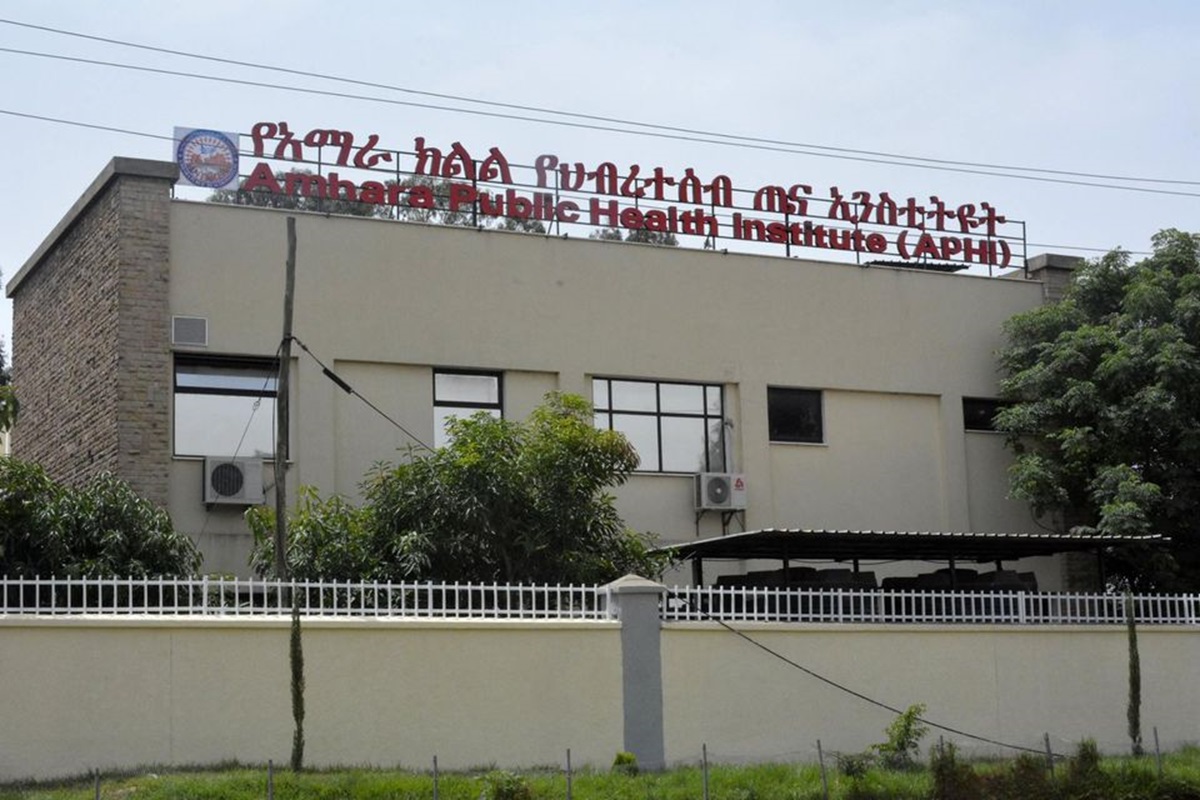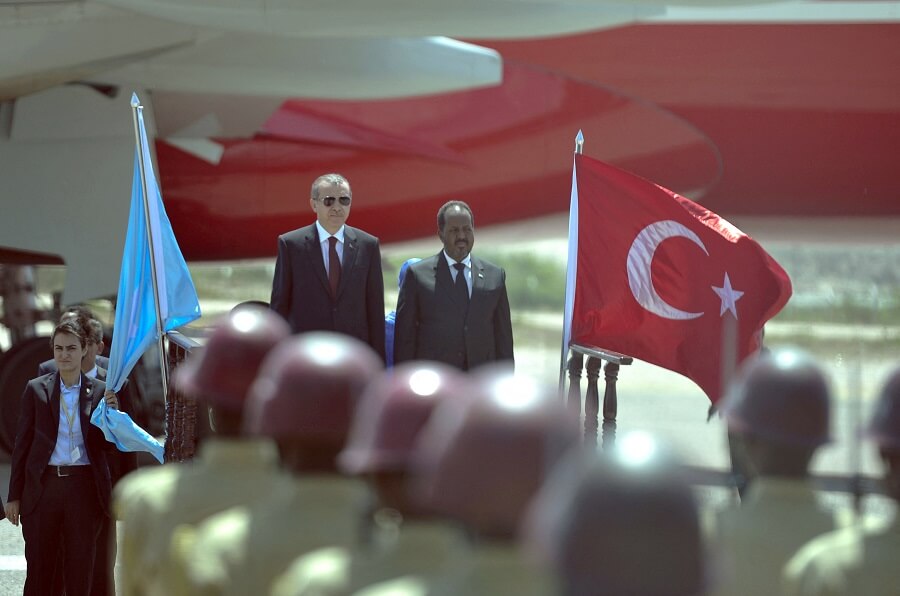In-depth: Khat farmers, exporters in Oromia battle to overcome multilayered crises made worse by gov’t interventions

Khat market in Kombolcha district, East Hararghe
By Abdi Biyenssa @ABiyenssa
Addis Abeba – Farmers and exporters of the lucrative khat crop, an essential stimulant plant, cultivated in vast areas of in the Oromia region are facing an unforeseen socio-economic crisis as a result of disruptive government regulation. The repercussions of this state-intervention has sent shock-waves across the sector, affecting everyone toiling to make ends met either from farming, or trading the mild stimulant eaf; from the humble farmers in the countryside to the bustling export agencies in towns and cities.
Traditionally a coffee cultivating areas in Oromia region have in recent decades transitioned to a predominantly khat producing places; this is particularly visible in districts such as Oda Bultum, Badessa, Gelemso, Habro, Chiro, and Boke in East and West Hararghe zones. The move from coffee to khat was driven by the khat’s attractiveness that have found a ready market domestically and internationally. But so too the ever widening crisis affecting countless households.
“The shift to khat farming was an economically driven decision by the farmers due to the plant’s high market demand and resilience,” Tofik Abdela, a researcher and agricultural economist specializing in Khat at Oda Bultum University explained. However, he noted that the increased involvement of the government in the Khat market under the pretext regulating the business has resulted in “an alarming financial aftermath that’s taking a heavy toll on the farmers”.
The mild stimulant plant grows mainly in Ethiopia, Kenya and Yemen; but Ethiopia was known to be the biggest exporting country up until 2020. According to a research published in 2020 on Khat marketing and its export performance in the Ethiopian economy, Khat industry was “one of the leading agricultural sectors. The industry constitutes 4% of the country’s export earnings andshares9.4% of total merchandise export.”
The once vibrant market is now gutted to merely navigate its bare existence, thanks in large part to inexplicable and often unpredictable state intervention in the market. Recently, the crisis has made its way to Prime Minister Abiy Ahmed’s attention during his last parliament appearance on 06 July. MP Mohammed Qophe asked the PM about the endless challenges surrounding the khat export trade, and the persistent challenges the khat farmers are facing. The Prime Minister responded simply saying, “the problem still exists, and we need to find a solution.” “We are discussing it with concerned parties with the aim of addressing the farmer’s pertinent issues” he said.
Double deposit, multiply crisis
In April 2022 the Ethiopian Ministry of Trade & Regional Integration (MoTRI) announced that it had doubled the export price for khat, which requires an exporter to deposit to an Ethiopian bank US$10 for a kilo of exported khat instead of the long-time fixed price of US$5. Even though the decision was reversed for a short period following a subsequent ban from Somaliland Khat Association, it was later reinstated, causing major disruptions of the khat market and placing an unsustainable burden on the khat exporters and the farming community.
A month later, the same ministry announced that it had revoked 830 business licenses of Khat exporters who are allegedly “involved in illegal activities” including failure to renew business licenses and misuse of their services.
The Ministry promised to increase the country’s income from khat export and streamline the legal trading system and to take measures to set up a national level of information flow, and organize a task force to “prevent illegal trade and smuggling, clarifying information, as well as tightening and monitoring Khat export” at national level.
But until today, the exorbitant deposit of US$10 for a kilo of khat that exporters are forced to pay, causing a major disruption in the marker, remain in place.
Representatives from prominent khat export agencies, Biftu Baha and Brighton, who chose to remain anonymous, revealed the repercussions of this increased export price. “Such a surge in export prices has disrupted our export routes. While we continue to ship to Hargeisa and Djibouti, we’ve had to halt exports to Mogadishu and Puntland,” a representative of Biftu Baha said, adding that khat exporters from countries like Kenya have dominated these markets due to lower prices.
He further added that the gap between the production cost of khat and its market or export price, [the US$10 exporter is expected to deposit to a bank for a kilo of chat] is cutting deep into their profits plunging them deeper into crisis. Making it worse is the frequent taxation at multiple checkpoints at municipal and regional level.
“The Oromia regional government and the Awaday municipal administration are imposing a combined levy of 22 birr per kilogram of khat, 17 birr and 5 birr respectively,” the representative explained. “The situation in the Somali region mirrors the same, leading to a total levy of 44 birr per kilogram. This is without exclusive of the federal government’s levy.” Such heavy taxation without taking into account transportation and other costs associated with the production and export of khat in an industry operating on thin margins, is a devastating blow, he added.

Khat farm, Kombolcha district, East Hararghe
The fallout from the disrupted supply lines and the hefty taxes have pushed these agencies to their breaking point. A member of Brighton Khat Export Agency, who asked to be anonymous, told Addis Standard that the agency which was established at an initial capital of 24 million birr with farmers, traders, and investors constituting its 150 members has halted Khat export after it incurred a loss amounted to 400 million birr owing to heavy taxation, uniform US$10 export price per kilo for all types of Khat, which some exporters refer to as ‘federal government tax’, and additional burdens, such as surging expenses for transportation, accommodation, among others.
“There are certain types of khat that deserve to be levied a tax of ten dollars, but the government imposed a levy of ten dollars on all varieties of exported khat,” he noted. Another Khat export agency, Biiftuu Bahaa, was rendered out of operation in a similar manner. Biiftuu Bahaa’s loss accounts for 350 million birr according to a shareholder who spoke to Addis Standard anonymously. The financial strain on these agencies is immense, the repercussions however, go beyond export agencies’ balance sheets instigating layoffs and resultant distress on countless families.
“Our organization alone had to let go of a significant portion of our workforce. And each of these workers have families that are now deprived of a steady income. The human toll of this crisis is extensive,” said the member of Brighton agency.
“Our survival is intertwined with the khat market’s success. If it fails, we fail.”
Khat Farmer
Meanwhile, at the root of this value chain, the farmers bear the brunt of this crisis. Farmer Faud Ahimed from the khat capital Aweday city in East Hararghe zone shared his personal experience, stating, “the price of khat, which we used to sell at 2000 to 3000 birr, dropped to 200-500 birr. Not only farmers but also traders and workers whose activities are related to the production and trade of khat are exposed to unemployment and all the families and people who support these workers and traders have lost their livelihoods and are exposed to hunger and misery.”

The effects of these changes have spilled over to the youth population. According to Fuad, in the city of Awaday alone, tens of thousands of youths lost their jobs and were forced to return to the countryside without income to support their families. Fuad shed light on their financial struggles, stating, “We took loans to buy gasoline for khat production, but without a market for our khat and with income losses, we can’t repay our debts.” He further explained, “We’re on the edge. It’s difficult to afford basic educational supplies for my children, and providing for my family is increasingly challenging.”
Farmer Ibrahim Mohammed, who lives in Ugaas Leencha village, Haramaya district, East Hararghe zone added, in a desperate scramble for survival, farmers have resorted to selling their livestock and making charcoal bricks from wood for sale. “We’ve sold all our animals to support our families, and our houses are empty. Despite these sacrifices, we’re still not able to improve our livelihoods,” he lamented, exposing the underbelly of their struggle.
in the city of Awaday alone, tens of thousands of youths lost their jobs and were forced to return to the countryside without income to support their families
“Our survival is intertwined with the khat market’s success. If it fails, we fail,” he expressed. Ibrahim further added “The people of Hararghe and khat are like fish and water. We cannot survive without a market for our khat.” Both farmers said as a result of significantly depreciated khat prices and an absolute lack of market, despite uninterrupted production, the once lucrative product is now used as an animal fodder.

The farmers have little choice but to grow khat due to the challenging geography of Hararghe, which is unfit for other crops like Teff or wheat, says khat researcher Tofik Abdela. “Khat can be produced four times in a year, unlike other agricultural goods. Also the terrain is mostly unbecoming for the cultivation of other crops or cereals because of the uneven geography of Hararghe,” Tofik said.
According to Tofik in Hararghe, a farmer with a household of seven members owns 0.6 hectares of land on average, and the farmer relies on the sale of khat to provide for his family’s basic needs like clothing, food, and education. An income from cultivation of any other crop on an equivalent land cannot substitute khat, Tofik said. “Some individuals do not comprehend the weight of the issue; they think farmers cultivate khat for social and cultural reasons. But the farmers do not have any other economical options to support a living,” he emphasized.
Highlighting further flaws in the government’s approach to khat taxation, Tofik urged for a comprehensive review. “The government’s classification of khat as a non-agricultural luxury commodity, and the subsequent heavy tax imposition, is a major oversight. For many households here, khat isn’t a luxury but a lifeline,” Tofik added.
“As a result it has been confirmed that the farmer’s income has immensely plummeted and the country’s foreign currency earning has deteriorated”
Kasahun Gofe, state minister
“Experts in khat, individuals familiar with its varieties, and specialists in the field must conduct research on the khat production, prices and export markets as opposed to government officials to avoid ill-informed decisions,” Tofik urged. Tofik also drew attention to the striking difference between Ethiopia’s heavy khat taxation and Kenya’s trader-friendly policies. “In contrast, the Kenyan government provides substantial support to its khat traders, charging less for aerial transportation. This disparity is increasingly clear, and it’s no surprise that Kenyan traders are gaining a competitive edge,” Tofik stated.
Insiders however argue that underlying the economic factors, the politicization of the khat trade marked by attempts over the past recent years by the Oromia region administration to empower local trading companies in the khat export trade that was long dominated by Somali traders including from Somaliland and Somalia, is the reason for the disruption of the khat trade. As such, they recommend greater trade diplomacy between the Somali and Oromo leadership to resolve the crisis.
In May, following growing grievances of khat farmers, exporters and the wider population in Eastern Oromia, the Ethiopian Ministry of Trade and Regional Integration conducted an investigation into gridlock facing the khat export trade. According to Kasahun Gofe, state minister of the ministry, heavy and multiple taxation, existence of several irregular tax checkpoints, individuals with export license not being in operation and sometimes using their license for illicit purposes are identified to be the main underlying causes.
“As a result it has been confirmed that the farmer’s income has immensely plummeted and the country’s foreign currency earning has deteriorated,” Kasahun wrote on Facebook.
The Ministry has discussed the outcome of the investigation with representatives of relevant stakeholders including the Customs Commission, National and Commercial Banks, Regional trade bureaus, Federal Police and the Prime Minister’s Office and agreed on separate and collective measures to be taken by respective offices.
Subsequently, the ministry issued a circular in June ordering the removal of all tax checkpoints put in place by local administrations without the consent of the Customs Commission and prohibiting any form of taxation by regional and municipal bodies of exported khat. Regardless of the decision, Addis Standard learned from sources on the ground that none of the corrective measures have been implemented and the crisis has continued unabated as of July. AS







